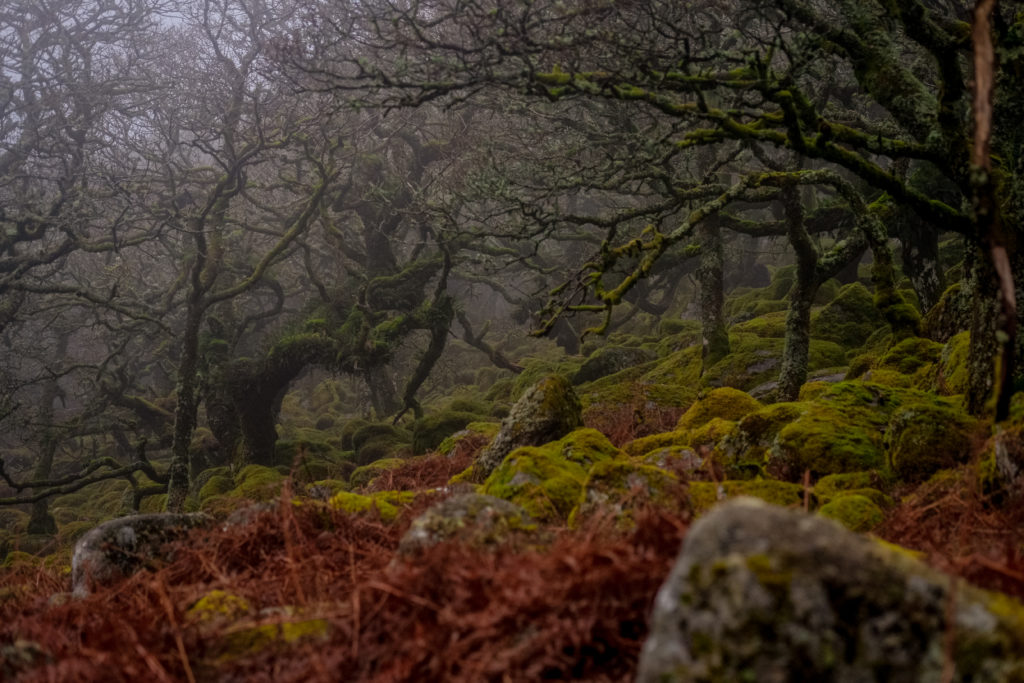Malcolm Anderson explores one of Dartmoor’s three ancient high-altitude oakwoods

As we leave the carpark at Two Bridges, the fog is a faint tide line against the tops of the surrounding Tors. With each faint breath of wind it shifts across the bedraggled backs of the sheep amongst the deep orange of last summer’s bracken.
By the time we pass Crockern, the small house nestled at the end of the lane where it hunkers down against the elements that blow in over the moor, the fog has settled down onto our level. Hair clings to Roz’s face and my beard glistens with drops coalescing with each breath.

Roz has wanted to see Wistman’s Wood for ages and ages so secretly I’m delighted to see the weather closing in, to be doing up the coats and pulling on hats.
You see, fog and Dartmoor go hand in hand in my mind. There’s something about the silence and ancient solitude that drifts in across the moor and as much as I love the beautiful views of a clear day and the powerful skies when watching a storm come in from the top of a rocky Tor, it’s this chilly damp embrace that says moor to me.

Wistman’s is one of a handful of patches of ancient gnarled oak left on Dartmoor, a link to a past before sheep grazing and clearance. It sits nestled into the hillside between Longaford Tor and the dark waters of the small but perfectly formed West Dart as it slides quietly away downstream.

The trees here are short in stature, but big in spirit. There’s a unique feeling to the place, one that is heightened by the fog eroding everything beyond the lichen and fern decorated branches, verdant mossy boulders and the copper of bracken.

Following the West Dart River upstream it’s only a short walk to Wistman’s Wood but hours can be lost amongst this small slice of natural history. Time exists somewhere else once you step off the path and settle into a mossy chair.
If you go, don’t expect to be back in time for dinner.
And hope for fog.